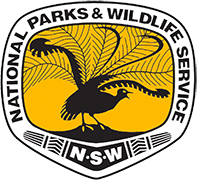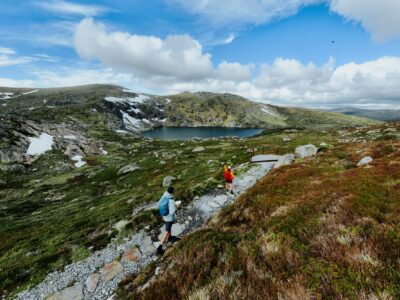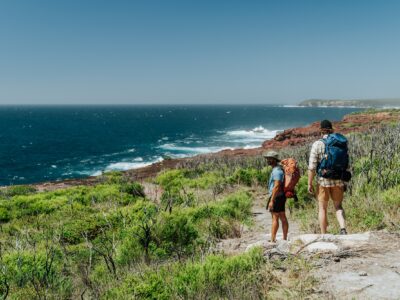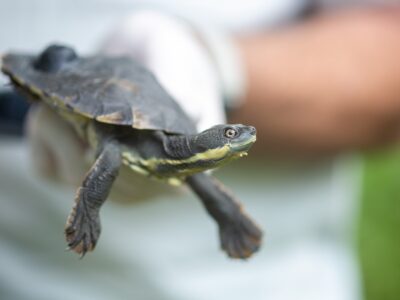An adorable waddle, enviable swimming skills, dignified outfits and romantic natures give penguins charisma and charm in spades. But there’s even more to our tiniest penguin than you think.
Little penguins – you might know them better as fairy penguins – are the smallest of the world’s 18 penguin species. These teeny water-loving birds travel all across the southern coasts of Australia, from Perth to Coffs Harbour, and are the only species of penguin to breed on the Australian mainland.

An adult penguin keeping its adorable hatchlings warm.
Nicholas Carlile/DCCEEW
In NSW, the only mainland breeding colony is in a secluded Manly cove in Sydney Harbour National Park. With those kinds of views, who could blame them? Numbers of little penguins in the colony have sadly dwindled in the last few decades, so this NSW colony is classified as endangered and needs extra help from all of us to keep on thriving. Little penguins face a number of threats. On the mainland, dogs, cats and foxes pose the greatest threat by attacking the adults and chicks.
The most obvious difference between little penguins – who go by the scientific name of Eudyptula minor – and other penguin species is their size. Wearing tiny slate-blue tuxedos, they stand up to 35cm tall and weigh around 1kg when they’re fully grown. Compare this to the world’s largest penguin – the emperor penguin – which can stand up to 110cm tall and weigh in at 30kg, and you’ll get a clearer idea of how pint-sized these guys are.
-
A day in the life of a little penguin
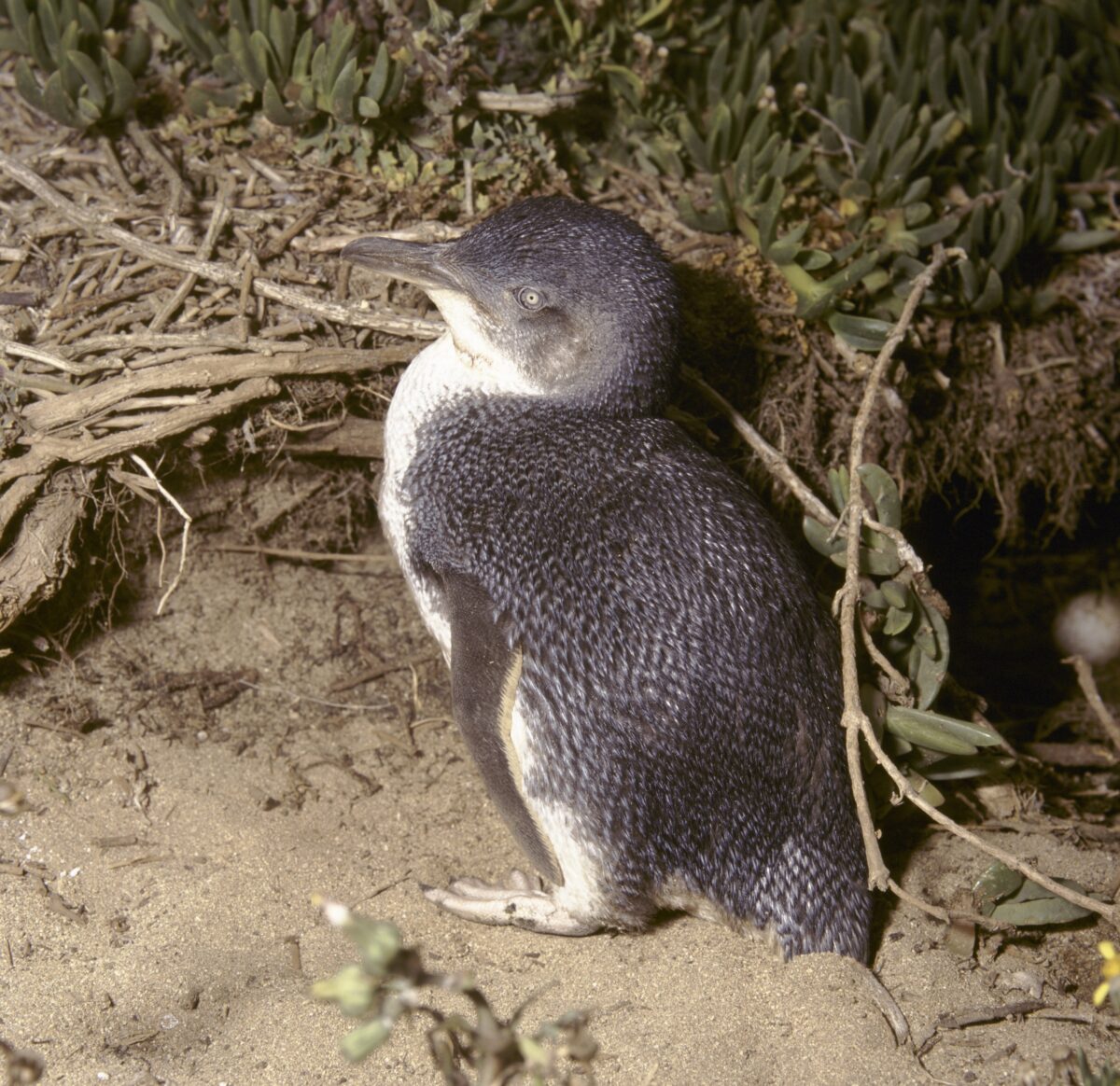 Photo Information
Photo InformationA pint-sized little penguin in its coastal habitat.
Sydney Harbour National Park
Ken Stepnell/DCCEEW
Little penguins’ exceptional swimming skills mean they’re most at home in the sea. Adults will travel around 14 to 20km a day while foraging for food – usually small fish, squid and krill (tiny shrimp-like crustaceans) – using their flippers to propel them through the water.
Did you know? Little penguins can travel up to 5 to 7 km/hour when they swim – that’s just a little slower than our fastest Olympians giving their all in the pool. Eat your heart out, Thorpey.
Out at sea, little penguins can be heard making short, sharp barks. If they’re disturbed or surprised, they’ll let out a snorting yelp (kind of like us when our beauty sleep is interrupted).
After a long day on the water, little penguins will return to the shore at dusk, and get comfy in their burrows. They enter their burrows via tunnels that lead into the nest bowl, which is usually large enough for them to stand up in. Burrows or nests can be found in rocks, sea caves, sand dunes, on headlands and sometimes even under man-made structures, like decks or raised houses.
-
Little penguin love is (usually) forever
View this post on InstagramThe romantic devotion penguins show to their mates is something that has captured many people’s fascination – and the little penguin is no exception.
In NSW, male little penguins return to their colony from February to May to rebuild their old burrows, dig new ones and find a suitable mate. The male will woo his lady by using a throbbing growl, or hoarse whoop, away from the nesting area. Once they’ve paired up, he’ll take her back to his nest and continue calling, just to make sure he’s sealed the deal.
Courtship then begins. Both the male and the female stand up straight, spread their flippers, bow their heads and walk around the nest in circles, calling loudly as they go – a very important ‘dance’ that forms a long-term bond between most pairs.
Did you know? Touchingly, most little penguins will commit to their partner – and stay monogamous – for life. Their separation rate is about 18%, far lower than the Australian divorce rate!
-
Building the next generation
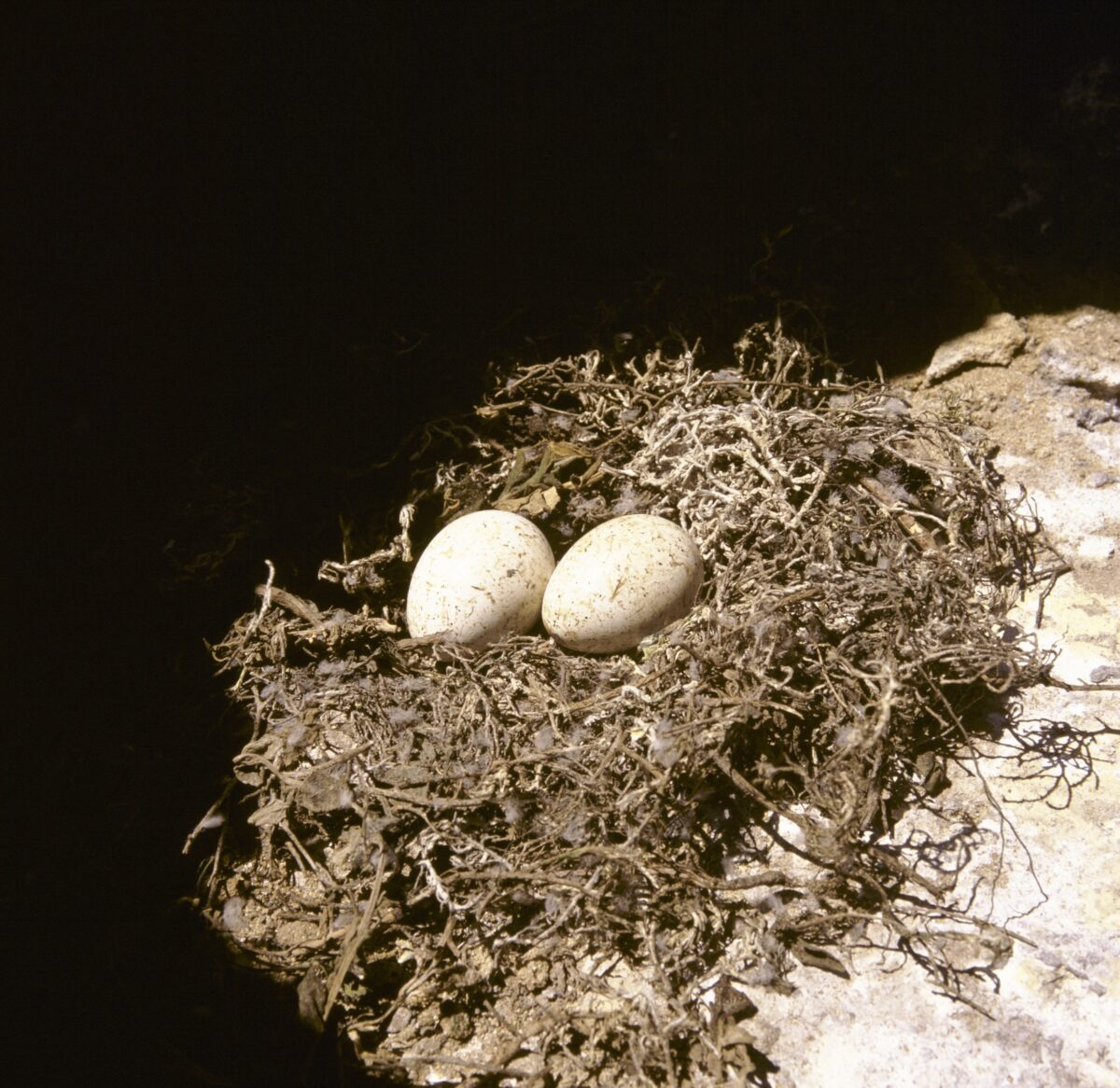 Photo Information
Photo InformationTwo little penguin eggs in a carefully built nest.
Ken Stepnell/DCCEEW
At around two or three years old, little penguins are ready for their first breeding season. Once the female lays her eggs (usually two), both parents will take turns incubating them for around 35 days. They’re protective parents – while one is on incubation duty, the other will defend the nest, sometimes even resorting to pecking, shoving and slapping other penguins with their flippers to keep the precious eggs safe.
The penguin chicks are vulnerable when they first hatch, and mum or dad will alternate staying with them for just over two weeks while the other hunts for food. They start off with a fluffy dark grey down, which they’ll lose – to be replaced with a chocolate brown coat before they mature into adults.
 Photo Information
Photo InformationA timeline of the little penguins annual breeding and nesting season via Environment and Heritage.
DPE
When they reach eight or nine weeks old, little penguins are ready to fledge the nest, filling themselves up with plenty of food to build the fat stores they need to keep them warm while their feathery coat grows.
-
Securing a future for little penguins
View this post on InstagramLittle penguins used to be quite common on the mainland, but numbers have been declining due to a number of compounding factors – predation by non-native animals like cats, dogs and foxes; urban development; human disturbances or disruptions at their nesting sites; overfishing and pollution. Little penguins are also threatened by vessel strike which has become one of the most common causes of death in recent years.
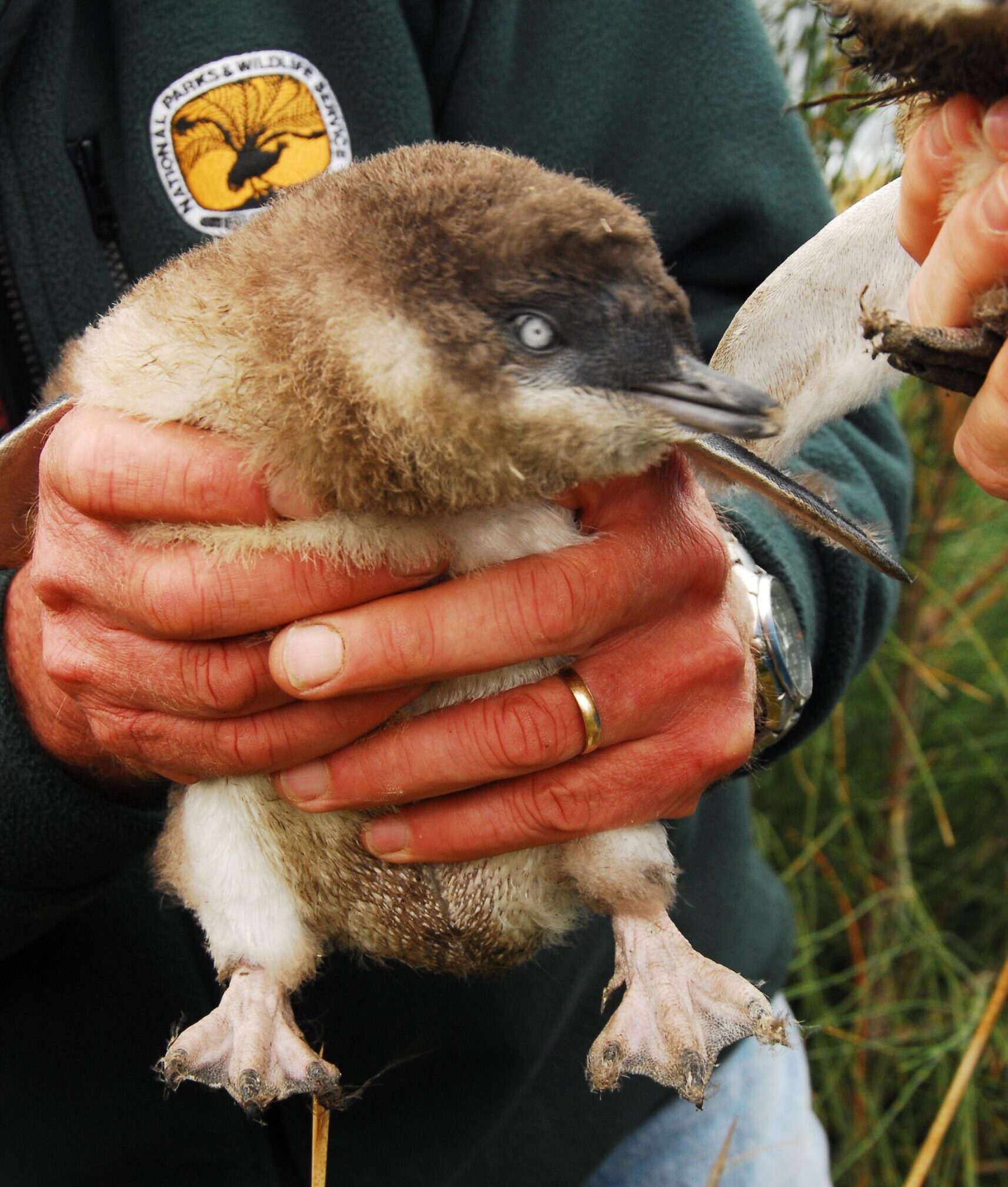 Photo Information
Photo InformationCheck out that fuzzy coat!
Stuart Cohen/DCCEEW
NSW National Parks and Wildlife Service works closely with the Northern Beaches Council. Taronga Zoo and the community on a conservation project to boost the numbers of breeding pairs in Sydney’s North Harbour.
Conservation actions in the area include habitat protection, education to the boating community, regularly monitoring populations and annual breeding, and undertaking predator control to better protect and recover the population.
Did you know? The Australian film ‘Oddball’ is based on the true story of a Maremma dog, which was part of a team of dogs trained to protect little penguins on Middle Island, Victoria. Predation by foxes meant numbers of little penguins had dropped to fewer than 10 in 2005. Thanks to the success of the island’s dog protection program, there were around 130 little penguins by 2015.
-
How you can help
 Photo Information
Photo InformationKeep an eye out for signs that indicate little penguin critical habitat in national parks.
Sydney Harbour National Park
Michael Van Ewijk/DCCEEW
Now you’ve learnt more about how special these penguins are, you’re probably wondering if there’s anything you can do to help protect them, too.
During the breeding season, if you’re in an area where little penguins are known to frequent (there’ll usually be signage to let you know), make sure you keep your distance, minimise noise and don’t use flash photography, which can disturb their nesting. Always take your rubbish with you whenever you’re out and about, especially when you’re on the water or in a national park.
Did you know? Little penguins are protected in NSW by the Biodiversity Conservation Act 2016.
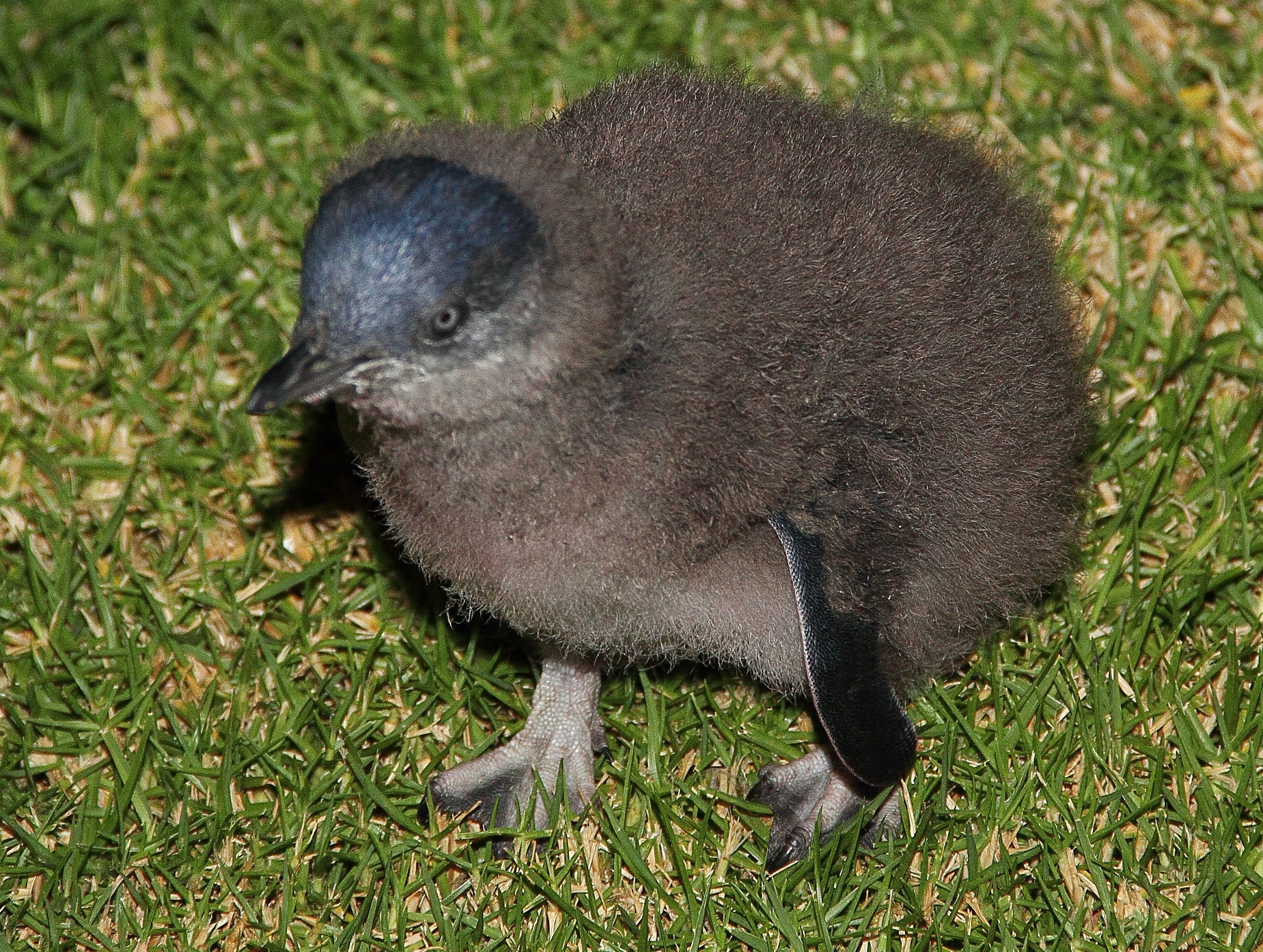 Photo Information
Photo InformationLittle penguin chick (Eudyptula minor)
John Morrell / DCCEEW
Practice responsible pet ownership, keeping cats indoors and your dog on a leash. Remember, pets aren’t allowed in national parks, and it’s best to check signage on beaches to see what the rules are around bringing your dog. The rules aren’t there to ruin you or your pooch’s fun – they’re just helping to keep our native wildlife safe and sound.
Did you know? You can receive training to become a Volunteer Penguin Warden with NSW National Parks. Penguin Wardens patrol breeding areas nightly from the beginning of the season when the first penguins have come back to their burrows until the penguins moult and leave. Find out more.
You can also donate to the Foundation for National Parks and Wildlife, which launched an ongoing program to protect Manly’s little penguin population in 2019.
